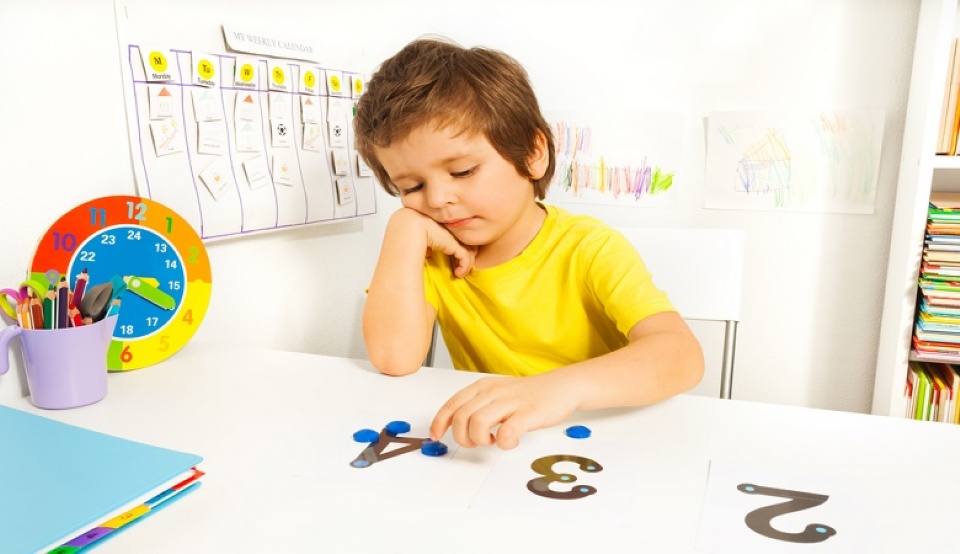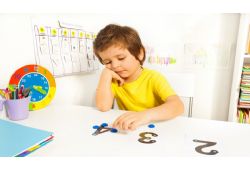“Tomorrow”,
“in a week”, “after sleep”, “in a month”, “wait a minute”, etc. All these
notions are hard to understand for very young children! Motherforlife.com
explains it all… in two minutes!
“We’ll be
going in twenty minutes!” If, for you, this sentence is crystal clear,
because you understand that you can fold your clothes and put the dishes away
in that length of time. For your three-year-old child, it is like speaking
Chinese. In fact, he only understands one thing “We’ll go”. For
him, time is a very foggy notion. You can find in a Larousse volume dedicated
to children aged 4 to 6 that specifics such as “tomorrow”, “in a
week”, “in three months” make no sense for children. They only know that these
expressions are in the future or more specifically that they will happen
“after” and not “before”. Saying “after lunch”, “when daddy comes back from
work” and “before bedtime” will be much more precise for your child then days
of the week and dates.
Indeed, it is
only after the age of 4 or 5 that he will truly be interested in notions of
time, hours and duration. He will begin to try to understand these indications
in his own way but will only be comfortable with the present, past, future,
days of the week and schedules in first grade (around 6 years old).
Benchmarks instead of
hours
Even if the
notion of time remains vague for them, we can still initiate younger children
to understand their timeframe with some tips adapted to their age. During their
first two years, children understand their life and their world by associating
them with physiological benchmarks (meals, sleep, bath, etc.) Little by little,
they learn “soon” and “wait”.
Near future and
past become clearer for children over 3 years old. They can make the difference
between “before” and “after” in clear instructions (“Put on your socks on
before your shoes » or “We’ll go to the library and after
that, we’ll go to the supermarket”)
By the age of 4,
they use words like ”before”, “after”, “day”, “night”, “morning”, “yesterday”,
“right now”, “later”, “in a moment”, etc. but the duration remains
vague unless we base it on a reality that they understand. Saying “We
will leave after Chuggington” will make much more sense than “we
will leave in 15 minutes”. Similarly, “We will eat dinner when
daddy comes back from work” would be easier to understand than “We
will eat at 5;00”. Benchmarks help children to locate events in the
course of their day. Used to a ritual or a schedule established in daycare, for
example, children feel safer when they know what is coming after that they are
currently doing. It might not be relaxing for parents, but it grounds them in a
sequence that they understand.
It is often around the age of 4 that children ask for a watch,
probably because they saw their parents or other adults use one. They know or
feel that time influences and shapes our life. We keep saying “Quickly,
we’re going to be late!” and
“Get up, it’s time!” but
we must be careful not to focus on our conception of time as adults.
When they start school, they learn faster. They can tell seasons,
days of the week, the duration of an hour or a minute, months of the year and
even dates. Between 6 and 8 years old, children learn to read the time on
clocks with big and small hands. Digital clocks give time while other clocks
allow them to read and decode it. Several books and games can help you teach
time to your children.
Choosing the right words
- Try to use the same benchmarks and associate them with an action that your child knows; “In the morning, you get up and have breakfast”, “We eat lunch at noon”, “In the afternoon, we will go to the library”, “This evening, when your daddy will come back from work...”, “Tomorrow, after sleep, you will go to daycare”, etc.
- Many songs exist to learn days of the week and months of the year.
With a calendar divided by month, ask your child to cross off days that have passed. Customizable calendars with stickers are good tools. Children can easily visualize the moment of the day or of the week. It is possible to expect, anticipate and even count the number of days before a birthday or a special event.
A day or a week?
- Take pictures of every moment of the day to help children develop their sense of time. Place these moments in order on the wall or in a book.
- Draw a clock and stick pictograms near every significant time (a bowl of cereals at 7;00, a pillow at 2;00 to represent his nap…)
- Make a weekly calendar with felt or cardboard. Ask him to draw repositionable items that can be applied on each day (Monday; swimming lesson, Tuesday; daycare, Wednesday; home, Thursday; at grandma’s, etc.) Add as many events as you like.
There are simple games that require playing with daily activities and a daily or a weekly schedule. Illustrated skits can also help him place events in local order. For example; get up, get dressed, go outside, arrive in daycare.
Books
- Show him books that show him a daily schedule associated with actions that children often repeat.
- Reading stories regularly also helps children understanding concepts. The course of a story with its beginning, events and end helps them understand their own timeframe.
- Some books have a built-in clock and require them to move the big arm and small arm throughout the journey of the main character. It can teach children numbers and time.

 In The Latest Issue:
In The Latest Issue:


 BY:
BY: 

Tweet
Share